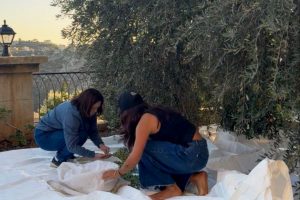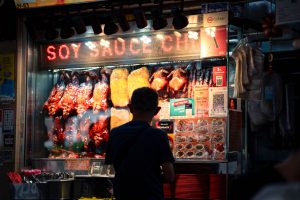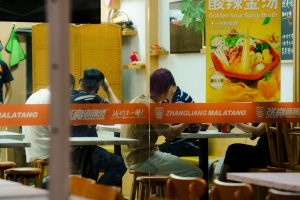Why always XLB? Do you get a tax break if you serve them?
Will the dumpling illuminati come and break your legs???
This is the paradox of Shanghainese cuisine in Singapore. It is somehow both overrepresented and underrepresented at the same time. On one hand, everyone knows XLBs/LaMien thanks to the franchising efforts of Din Tai Fung and Crystal Jade. On the flipside, it’s practically all they know because XLB + LaMien is such a winning combination that few restaurants want to deviate from the script.
So don’t encourage them lest we all drown in a ocean of pork aspic and vinegar. Don’t be a XLB-ordering basic bitch. Read this introduction to Shanghainese cuisine and order one of the three thousand or so dishes from Jiangnan:
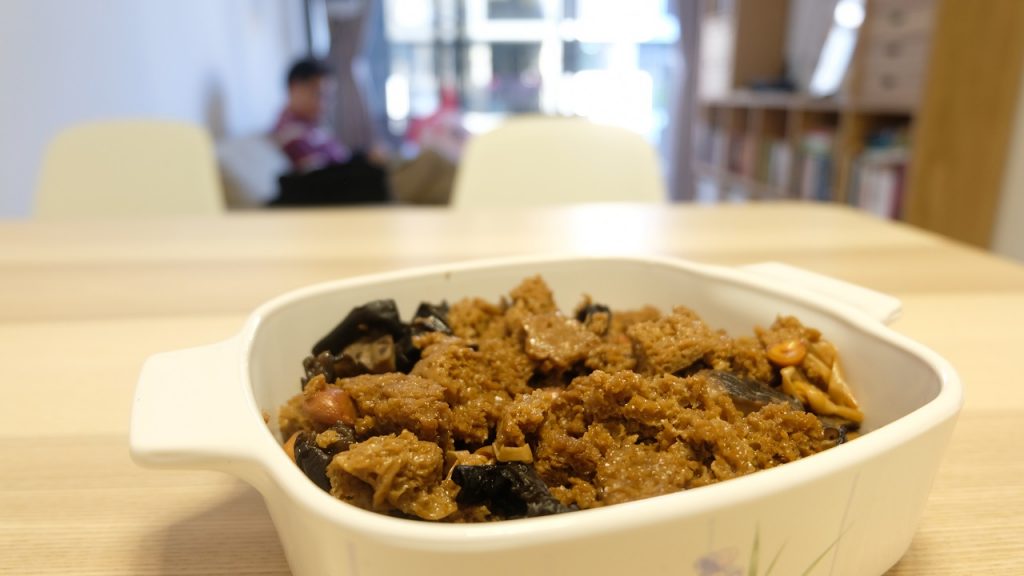
However, no soybeans or Bikini Bottom residents were harmed in the process. Instead, Kao fu is produced by leavening a mixture of flour, water, and starter. Once the dough rises, it is steamed *with the lid off* so that air can permeate every corner of the mixture. After that, it is dried thoroughly to remove—
Hey wait a minute PJ, isn’t this just, um, steamed bread.
Why yes it is. If you are the one who asked this question, then congratulations, take 20 well-earned points for Slytherin because I have no idea how this wheat loaf manages to taste like beancurd—it just does. Just like beancurd, Kao fu is traditionally eaten by monks and vegans for actual sustenance, and by normal people for the lolz. For banquets, it usually cooked with dried mushrooms, peanuts, black fungus and lily buds to make ‘Four Happiness Kao Fu’—a healthy appetiser to make you feel better about the 19 courses of meat that follows.
Where to eat: Shanghai Ren Jia, 798 Geylang Road
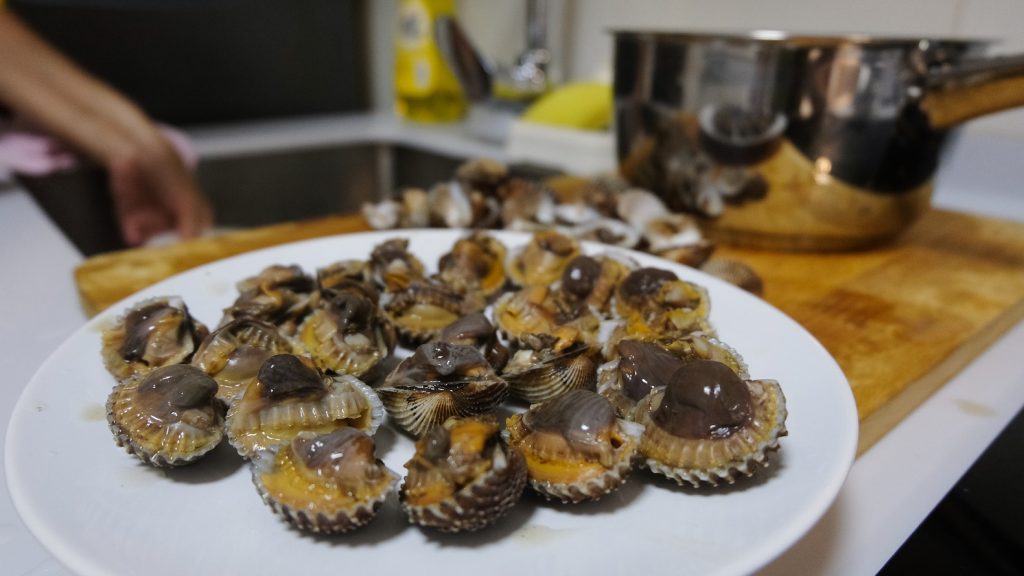
Shanghai, unfortunately, is full of both crazy people and cockles. Hence, the city has an age-old tradition of eating rare cockles still dripping with blood and brine, usually paired with a bottle of 60% proof Baijiu because *I quote them* ‘alcohol will kill the germs in your stomach’.
I wish this were a joke, but there’s no punchline. ‘Poached cockles on the half-shell’ is a real regional delicacy, and it’s incredibly popular despite the manifold danger of hepatitis, cholera, regular gastroenteritis, and a thousand other dumb ways to die.
So popular, in fact, that the government was forced to ban the sale of cockles entirely in 1988—after a massive hepatitis outbreak hospitalised more than 300,000 people. Sadly, this ban has deterred no one. The brave will buy cockles on the black market and cook them at home. The not-so-brave buy a plane ticket to Singapore and demand that I prepare it for them.
In their defence, I have to say: medium-rare cockles are indeed to die for. If left mostly uncooked, they are bloodier than a ribeye steak and more flavourful than your average oyster. Once you’ve eaten cockles on the half-shell, mussels, oysters, clams, and abalone will feel like chewing on used condoms. 10/10 for taste if you don’t mind dying young and dying painfully.
Where to eat: Don’t.
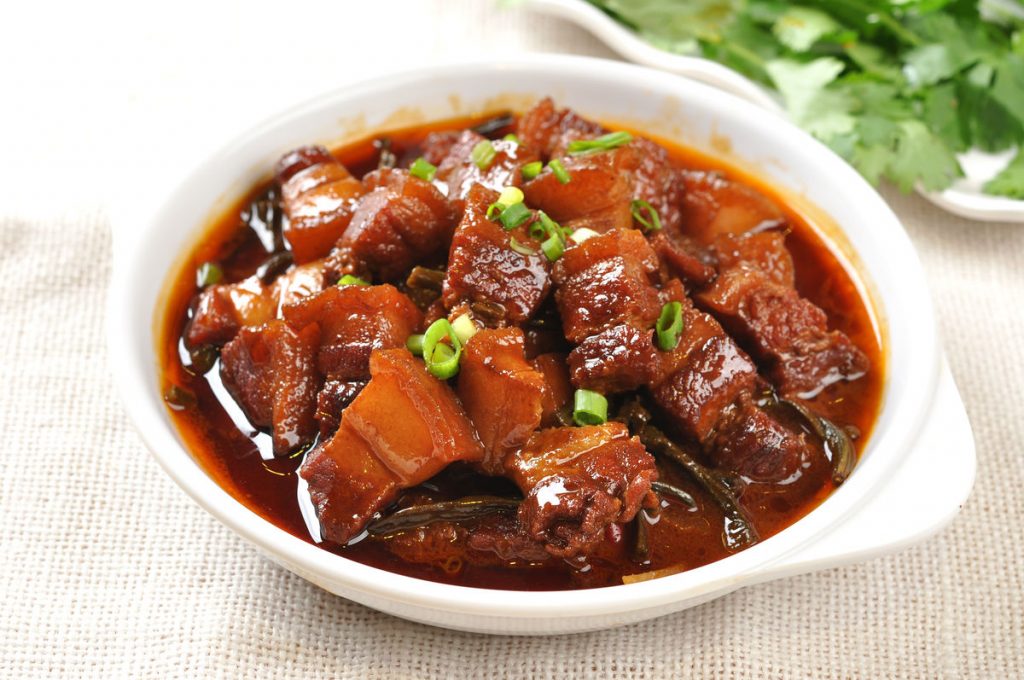
Some experts believe the dish requires high heat followed by a very low simmer, while others think that a tight seal around the lid will produce the softest pork.
Don’t look to me for answers. I’ve been eating Arnie’s ass for years.
Ideally, the result should be a piece of pork belly so tender it’s practically tofu between your teeth. Realistically, however, you should congratulate yourself if it doesn’t taste like a Turkey that’s been doing Crossfit.
Red braised pork is considered a ‘brain food’, much like Brands Chicken Essence. Mao Zedong regarded it as an essential food for the intellectual rigours of class struggle, and most anxious grandmothers agree. They claim that its high levels of collagen and saturated fat will sharpen your mind, enhance your philosophical prowess, and appease the bell-curve gods.
This is, of course, apocryphal. I’ve been eating it since I was born and I have been failing math for just as long.
Restaurants will serve the pork all by its lonesome so you can admire their artistry, but most non-wankers will throw in a few eggs or some bamboo shoots for the sake of a balanced diet. My personal preference is Octopus.
Where to eat: Crystal Jade Jiangnan at Vivocity serves ‘Hangzhou Dongpo Rou’, which is a high-SES red braised pork who went to UCL.
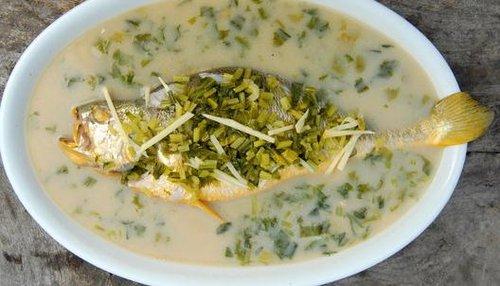
Personally, I hate this fucking dish because yellow croaker has more bones than a cemetery. It is hard to enjoy a soup when fish bones are lancing you in the gums with every slurp.
Luckily for me, yellow croaker is quickly going extinct thanks to overfishing. I have no idea where Putien gets theirs, but it’s most likely a lower-grade farmed fish from Guangdong. The wild ones are so rare these days you could pay up to 5-figures for a good-sized fish—if you remember to order in advance like this Emirati prince.
To do my part for the conservation of Oceanic biodiversity, here’s a story to ruin your appetite.
Snow mustard pickles—like kimchi—are made by compressing the leaves and sea salt underneath a flat rock. However, rumour has it that the best pickles are made when someone steps on the rock—someone in the village with severe athlete’s foot …
Where to eat: Shanghai Ren Jia serves it but I have not tried because it’s expensive and I hate it.
*Sigh* Xiao Long Bao
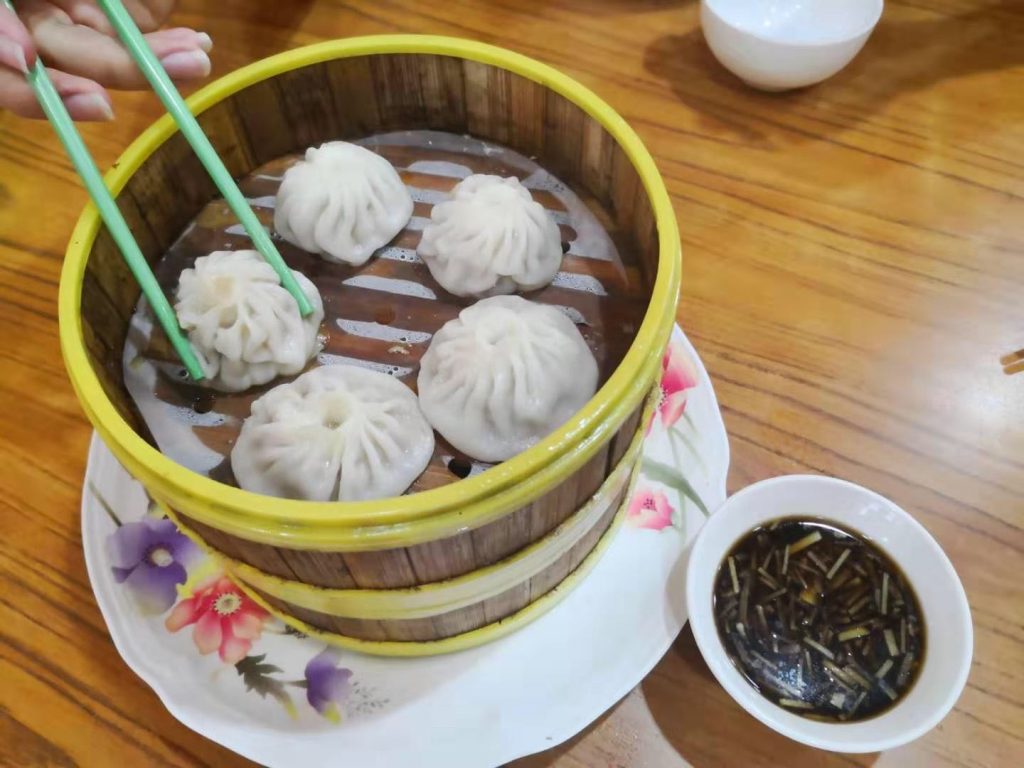
In fact, better than 99% of the XLBs you will find in Shanghai.
This is because XLBs are almost never served as a formal dinner entree in Shanghai. They are an ultra-cheap breakfast food found mostly in ratchet-ass streetside eateries. For $2, you can get 6 of them … if you don’t mind the dubious hygiene, the greasy ‘filling’, or the terrible food coma that results from eating molten pork for breakfast. (If it is indeed pork that you’re eating, and not some poor academic who criticised the Xi’s One-Belt-One-Road project).
The exception is the legendary Nanxiang Bun shop, which ‘perfected’ the XLB and elevated it to an art. Or that’s the popular belief anyway. The truth is, no local has eaten there since 2003 because queuing for their buns is like queuing for BTS tickets.
Where to eat: The other Shanghai Ren Jia at 151 Ang Mo Kio Ave 5. Not to be confused with the one at Geylang.
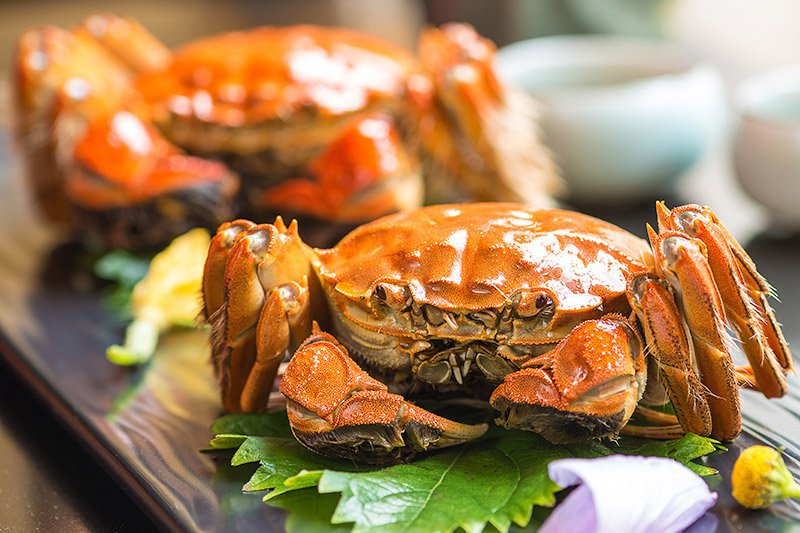
That’s the platonic idea, anyway.
Don’t get me wrong, the taste of the Hairy crab roe is unique, and I’ve eaten nothing quite like it anywhere else. However, Hairy Crab Season is an absolute shitshow these days.
Culinary festival? Please. It’s more like a dick-measuring contest for government officials and businessmen, all looking to show off their wealth/connections by plying you with the ‘biggest’, ‘richest’, and ‘purest’ crabs in a lavish setting.
Think corporate mooncake-gifting taken to ridiculous extremes. Think large paychecks overcompensating for tiny penises.
The result is, of course, price inflation and fraud. The best crabs traditionally come from the pristine waters of Yang Cheng Lake near Suzhou.
Which is also bullshit. Because the lake barely produces crabs anymore. Instead, its waters are rented out Airbnb-style to perform ‘crab baptisms’, in which hairy crabs are brought in from elsewhere and dunked in the lake’s waters for one week. This way, they get the ‘Yang Cheng Lake branding’ and can be priced at a premium.
This is not to say that all the Hairy Crabs sold in Singapore are cons. Just that—like penny-stocks and auto-erotic asphyxiation—you really, really need to know what you’re getting into. The Hairy Crab Industrial Complex is populated by devious fuckers like my uncle, who runs a factory making fake IDs for mystery-origin crabs which were probably raised in some septic tank.
Where to eat: Ask me again when September ends. For bulk orders, you can contact my devious uncle.
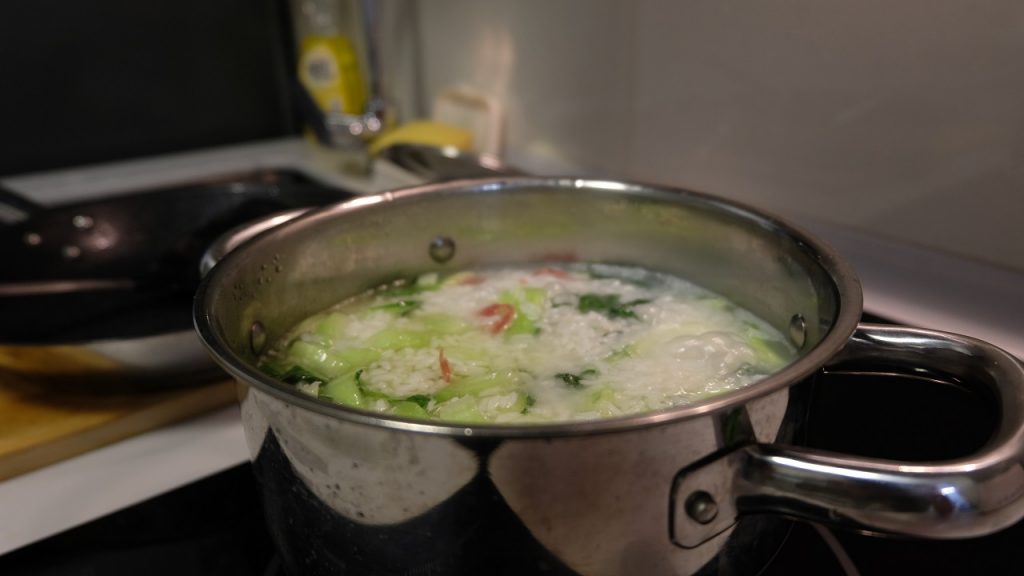
Shanghainese porridge is made by pouring water on leftover rice and reheating it for as long as you can afford without being late for work.
Sometimes you throw in some mushrooms and smoked meats, and maybe half a salted egg because you believe in self-care. On a bad day, it’s just clumps of rice floating in cold water, seasoned with the tears of self-pity and hurriedly slurped down so you don’t pass out from hunger on the commute.
Whether it’s decadence or depression, ‘watered rice’ remains a staple food; a mainstay of the working masses. Think of it as the economic bee hoon of the Yangtze delta, with a salted egg in place of the fried egg, and pickles playing the part of spam.
Where to eat: Nobody serves this because it is too sad. Pour water on rice and microwave for one minute. Eat while you are late for work for maximum authenticity.
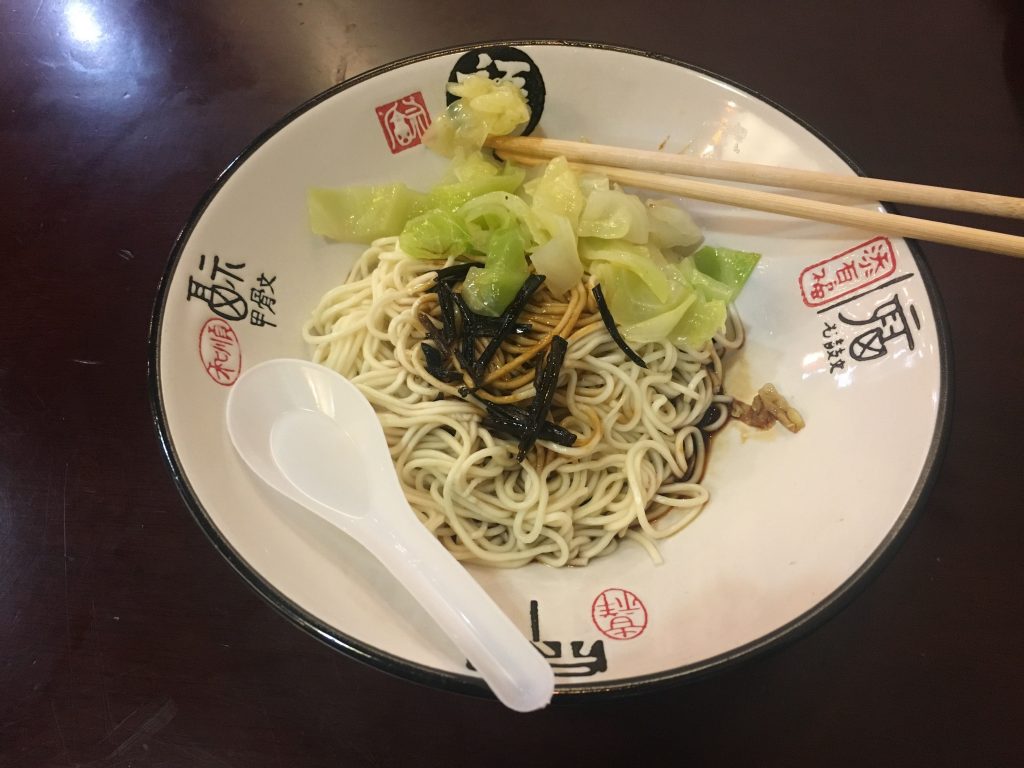
There are about nine million ways to cook your Shanghai La Mien, but the best way is, without question, to make Scallion oil noodles. It is the best because there are only four ingredients (scallions, sesame oil, noodles, soy sauce) in total, and it’s just one level harder than making Indomie.
Fry scallions in oil. Boil noodles. Pour scallion-oil and soy sauce on noodles. Eat noodles.
You can eat it for breakfast, lunch, dinner, supper, or high-tea. You can eat it first thing in the morning or late at night after throwing up outside the club. You can eat it with chilli, or a piece of smoked fish, half a kinder bueno, or whatever leftovers your mom forgot to throw out.
Young or old, prosperous or poor, scallion oil noodles will keep you alive and happy until you
1. Sober up
2. Ogilvy finishes *processing* the payment for your freelance work, or
3. Your mom cooks something more substantial.
Most recipes suggest that you add some dried shrimp for extra flavour.
Disregard this instruction because
1. the dish works with or without dried shrimp, and
2. who the fuck has dried shrimp just casually lying around?
Where to eat: Geisha Coffee at Burlington Square. Try their excellent coffee too.
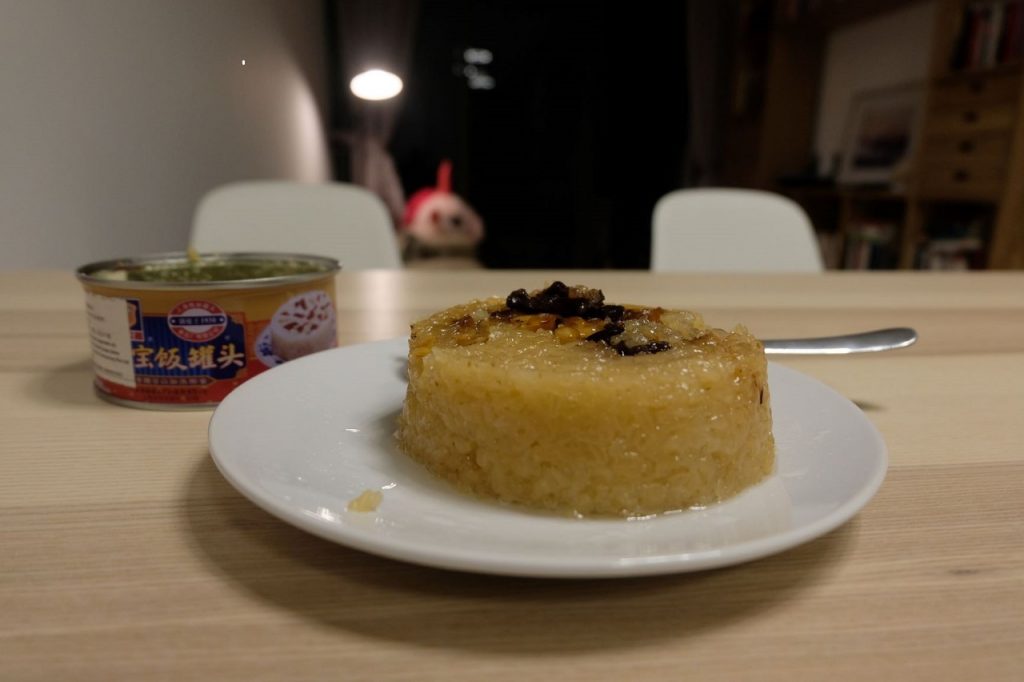
Eight Treasures Glutinous Rice is a sort of Shanghainese Nasi Lemak designed by people who promote Diabetes as a lifestyle choice. It is made by steaming sticky white rice alongside the ‘eight treasures’: dates, walnuts, red bean paste, groundnuts, cherries, apricots, gingko nuts, candied fruit strips, and, most important of all—LARD. Hideous, heart-killing amounts of lard to give the rice its rich texture and enough sugar to make the Health Promotion Board cry/cut its wrist/sign up for Tumblr.
If you don’t hate yourself after four spoonfuls, then congratulations ma’am, you are a hedonist of the first order and truly lost to civilised society.
That being said, I’ve eaten a family-sized portion of this decadent dessert by myself, and I can confirm that it is fragrant, delicious and 100% addictive. Adding fat and sugar to the already carb-heavy white rice makes it nine times more deadly, but also 2000% tastier.
Best eaten after a break-up, on the couch, while watching Bridget Jones’ Diary.
Where to buy: 4th Floor, Yue Hwa Chinese Products at Chinatown. Although it comes in a can and you will be missing at least 6 of the 8 treasures.
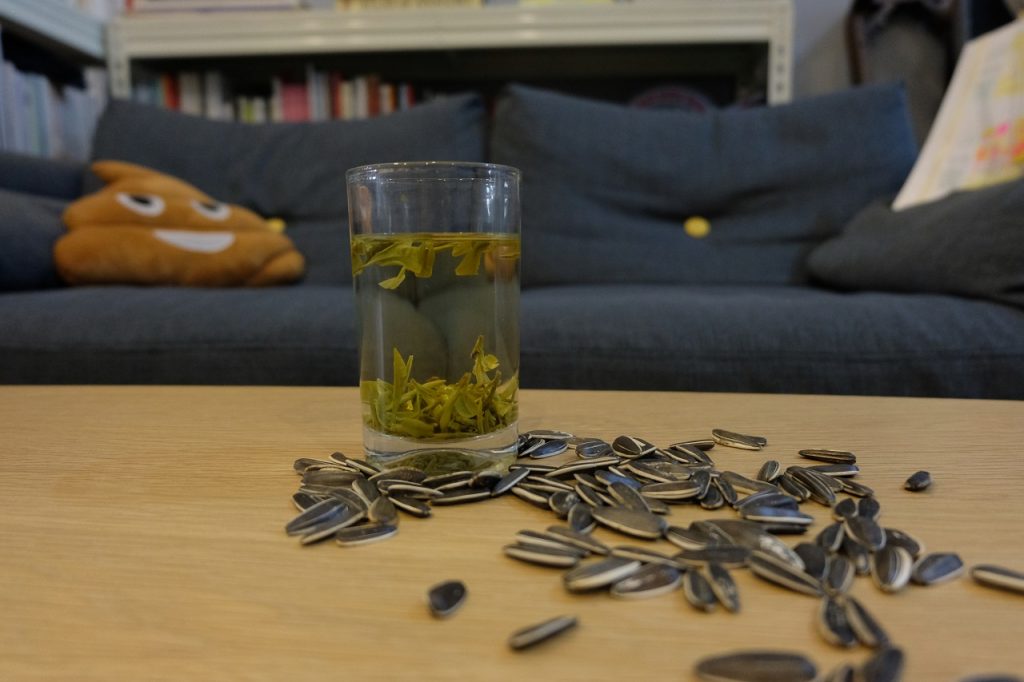
No, it’s main purpose is
A) to occupy your hands during a talkcock session, and
B) to annoy your Mahjong opponents to death with a constant stream of CLEK CRAK CLACK CLECK kREK kRACK de-shelling sounds.
Sunflower seeds are usually accompanied by a cup of chinese tea. But which kind tho? If you guess Jasmine or Chrysanthemum, then you are obviously Cantonese. If you guess Pu’er, then you are either a trend-following hypochondriac or a long-distance lorry driver from Yunnan.
The only correct answer is Dragon’s Well tea from Hangzhou, which is located 1.5 hours from Shanghai by train. The leaves look like long green shoots and the taste is apparently ‘nutty but delicate and refreshing’.
Or at least that’s what the experts say. Personally, I can’t taste shit lol.
Don’t worry if you are not an expert either. I’ve learned one simple trick to tell if your Dragon’s Well is legit, and tea experts HATE me. Jasmine tea leaves are well-behaved and will sink after a good soaking in hot water. Dragon’s Well are assholes and will float on the water’s surface for hours despite your best efforts. Every time you take a sip, they will try to escape down your throat or stick to your face.
Where to buy: Any reputable Tea vendor should have Dragon’s well. Sunflower seeds can be found in Redmart.
Order something, anything instead. There’s more to Shanghai cuisine than steamed and fried buns. It might taste weird and you might not enjoy it, but at least you can feel superior to all your friends/family the next time they order the XLB at Swee Choon.



